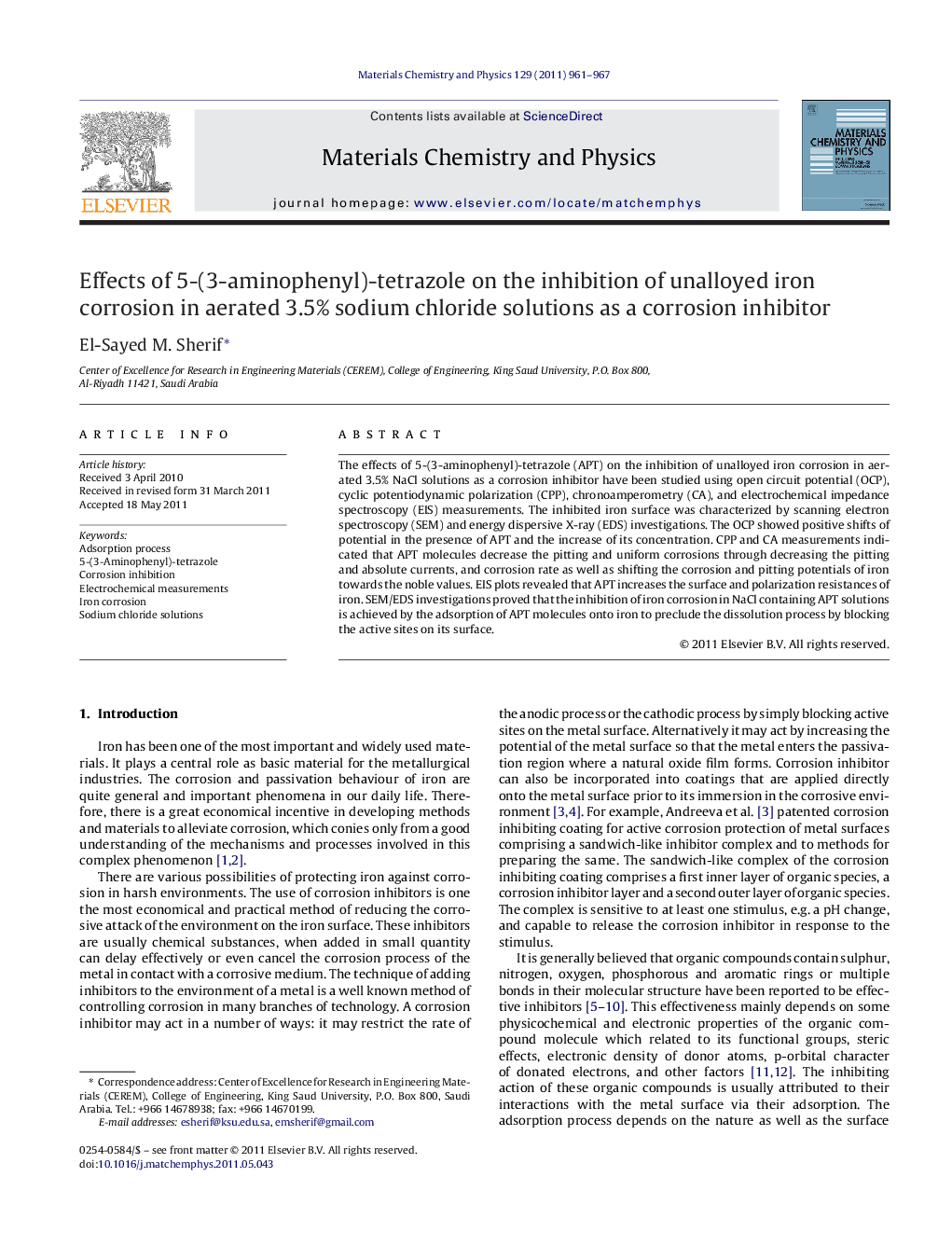| Article ID | Journal | Published Year | Pages | File Type |
|---|---|---|---|---|
| 1524633 | Materials Chemistry and Physics | 2011 | 7 Pages |
The effects of 5-(3-aminophenyl)-tetrazole (APT) on the inhibition of unalloyed iron corrosion in aerated 3.5% NaCl solutions as a corrosion inhibitor have been studied using open circuit potential (OCP), cyclic potentiodynamic polarization (CPP), chronoamperometry (CA), and electrochemical impedance spectroscopy (EIS) measurements. The inhibited iron surface was characterized by scanning electron spectroscopy (SEM) and energy dispersive X-ray (EDS) investigations. The OCP showed positive shifts of potential in the presence of APT and the increase of its concentration. CPP and CA measurements indicated that APT molecules decrease the pitting and uniform corrosions through decreasing the pitting and absolute currents, and corrosion rate as well as shifting the corrosion and pitting potentials of iron towards the noble values. EIS plots revealed that APT increases the surface and polarization resistances of iron. SEM/EDS investigations proved that the inhibition of iron corrosion in NaCl containing APT solutions is achieved by the adsorption of APT molecules onto iron to preclude the dissolution process by blocking the active sites on its surface.
► 5-(3-Aminophenyl)-tetrazole (APT) is a good inhibitor for iron in NaCl solution. ► The presence of APT and increasing its content decrease the corrosion parameters. ► The inhibition of iron is achieved by the adsorption of APT onto the metal surface. ► Increasing immersion time of iron enhances the inhibition efficiency (IE%) of APT. ► The IE of 5 mM APT exceeded 90% after 12 h of iron immersion in Cl solutions.
